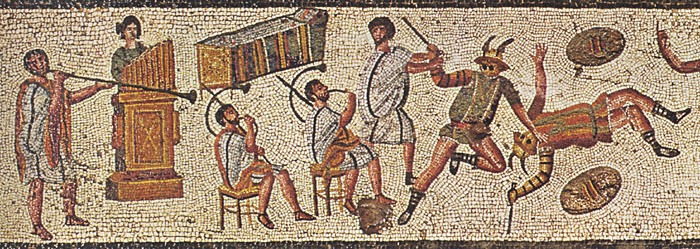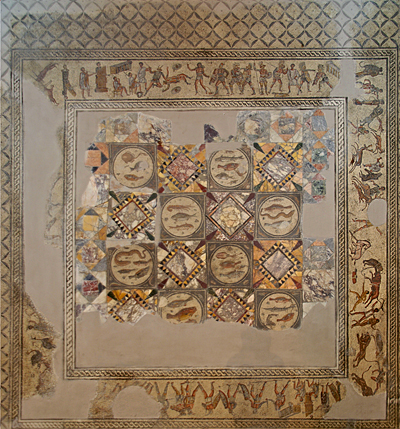
In this detail, the referee restrains the hand of the victorious eques, while both look to a verdict. In the background is what appears to be a decorated litter or covered stretcher for the removal of the body. Gladiators were not condemned criminals (noxii), who would have been executed in the arena and certainly were not dragged away with a hook.
|
Now in the Archaeological Museum, Tripoli, the mosaic was found at Zliten, on the coast east of Leptis Magna, the birthplace of Septimius Severus. The date is uncertain but may be about AD 200. This image shows the complete mosaic and provides a perspective that very often is presented only as individual images. Gladiatorial contests alternate with animal hunts. Across the top border, one can see musicians and combat between equites, a retiarius and secutor, a Thraex and murmillo, a hoplomachus and murmillo (who is appealing to the referee), and a final matched pair with crested helmets. Across the right-hand border, there are scenes of damnatio ad bestias and venationes. The opposing borders are damaged but show more gladiatorial combat across the bottom and venationes on the left. |

|
Reference: Imperial Rome (1965) by Moses Hadas.